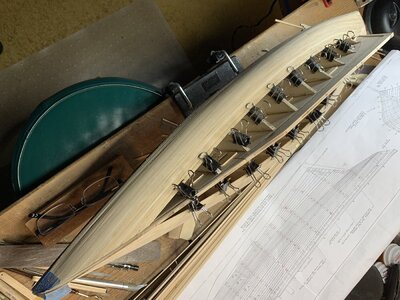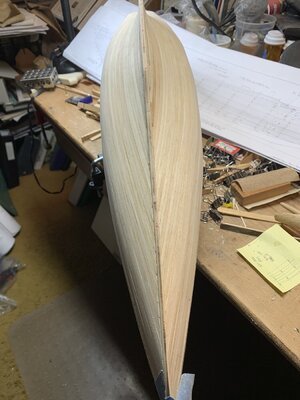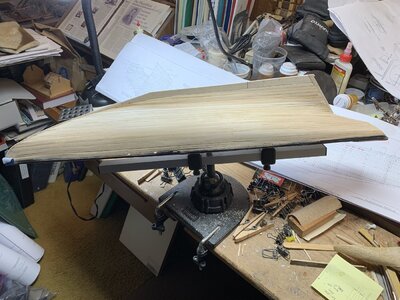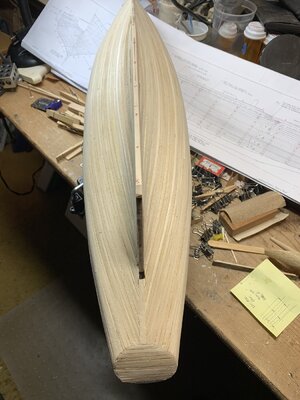After realizing that I had to plank the hull inverted clamped between aft deck planking I worked from the waist up keel-wards, just like doing my two prior stripper canoes. Disregarded the 1:48 POF practicum to have plank length no more that 5 inches. Problem with my POB is that those are too far apart and at times created bends rather than flowing curves in some planks in spite of a lot of prep fairing of the outer faces. I ran planks as long as the provided stock would reach to bulkheads and located my butt joints there with the standard two separating planks between joints on the same bulkhead. As of tonight after removing a few planks before the Garboard and then replacing them I have the hull planking closed off and will do some scraping and sanding to smooth out any of the planking high points and align faces of planks adjoining some lower set ones for a smooth flowing hull. I am not going to paste up the hull but want to have plank edges and fastener (depressions) visible in the painted hull. Still need to do touch up work at the waste scuppers, gulley sluces, and accent cove.
View attachment 197225Binder clips are very handy until closer to the keel and planking go vertically.
View attachment 197226Now looking bow to stern
View attachment 197227Ragged work along the way is the sign of a newbie with vision problems necessitating reworking and a lot of finishing requ
View attachment 197229ired before any thoughts of paint again. After fairing out with scraping/sanding and some adhesive with sawdust filler in cracks I'll lightly score the plank edges, butt joints properly spaced, and small nail indentations. Then flip the hull and go back to complete the afterdeck planking.






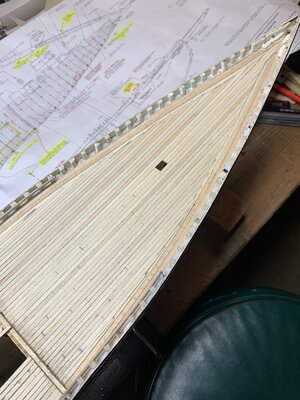
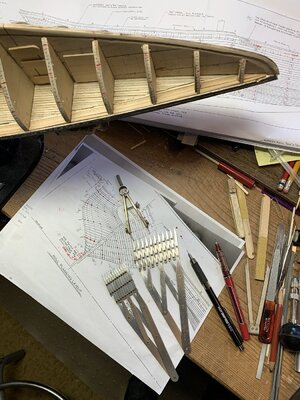
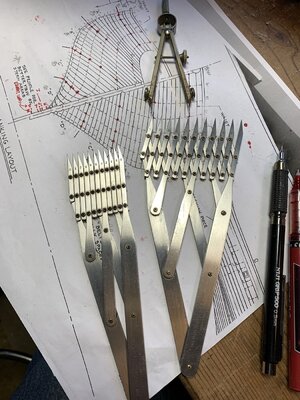
 I am sure it will all go well.
I am sure it will all go well.
